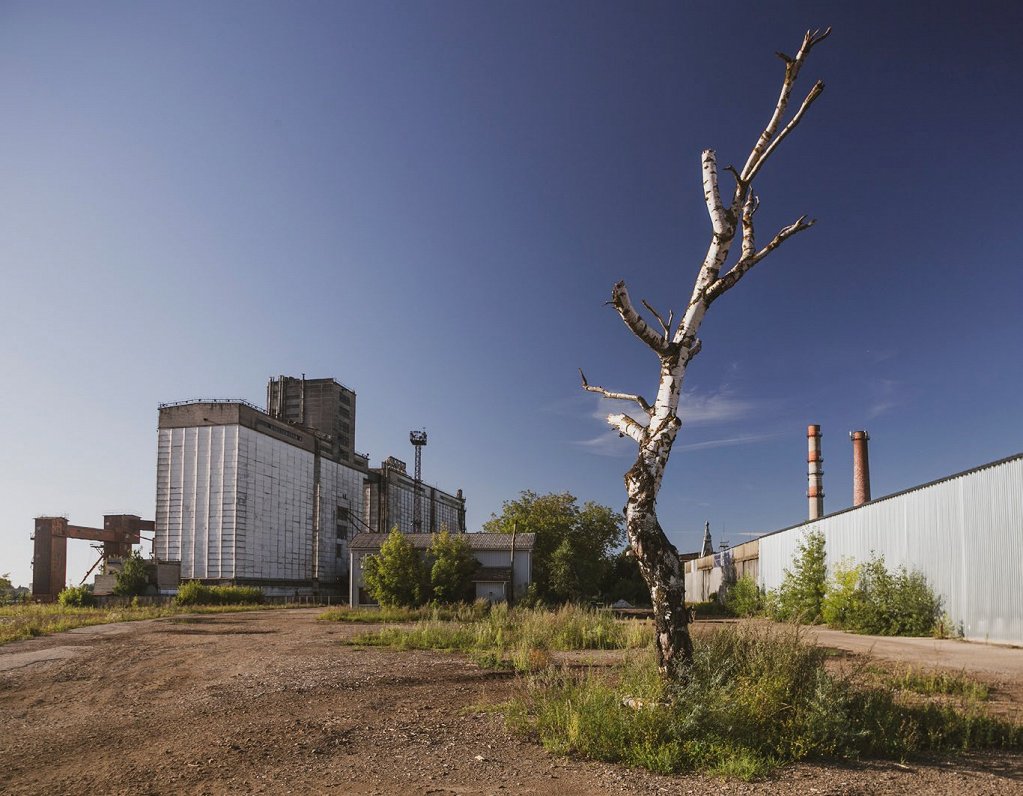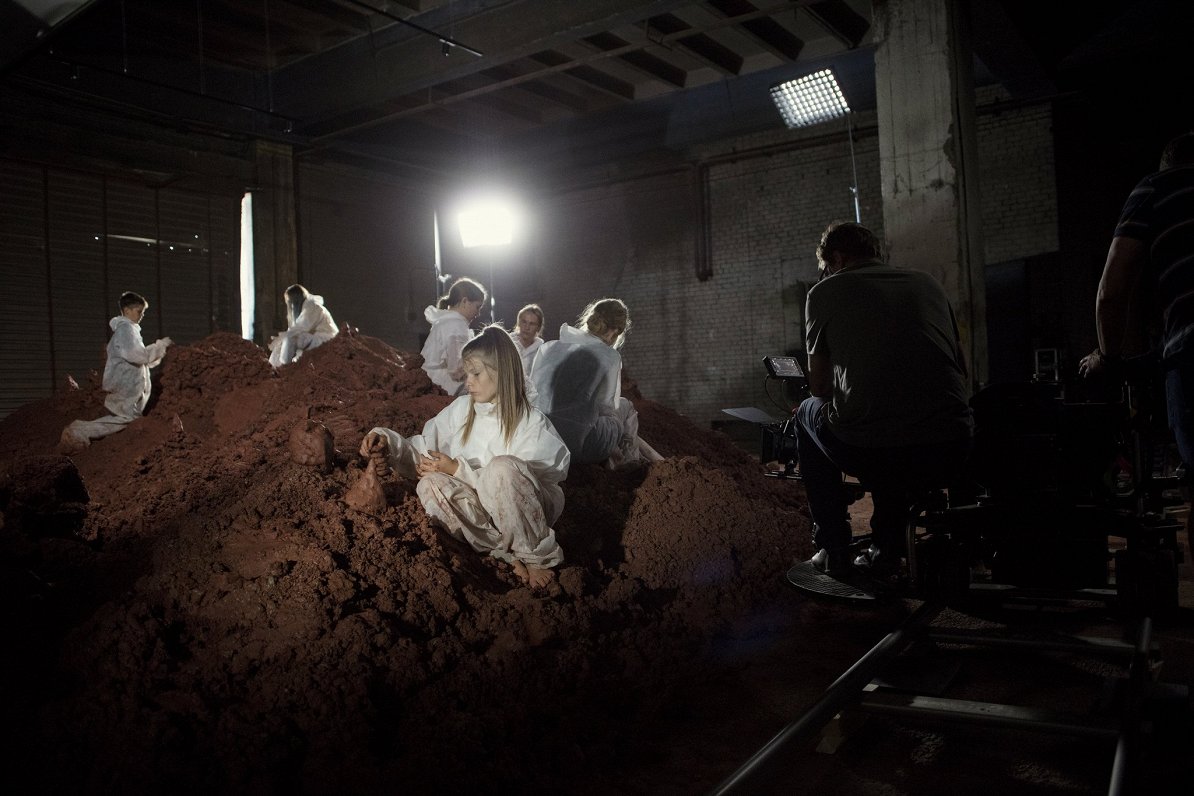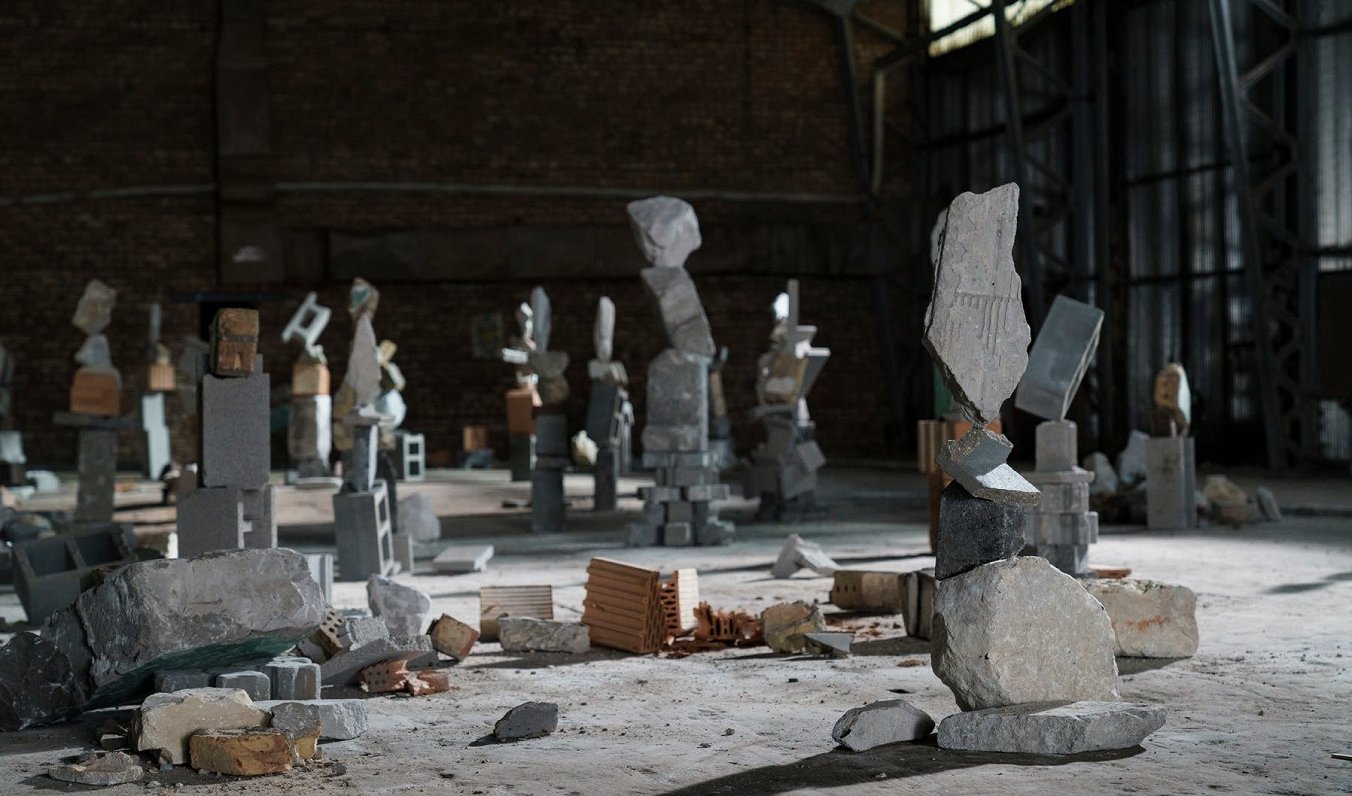The relationship between contemporary art and cinema has become closer and closer since the late 1960s. During this time, it was increasingly possible to see works made in video format or by film directors in museums, exhibition halls and galleries. In 2020, with the pandemic caused by Covid-19, the contemporary art event RIBOCA2 reached the cinema screens and will soon enter the homes of those interested.
In the mid-1960s, the so-called “expanded cinema” concept emerged with the publication of a book of the same name. Around that time, film directors and artists began to deconstruct the working relationship between the viewer and the film, promoting participation between viewers and visual works. These artists chose not to show their films in cinemas, subject to the conventions of the film media – in a dark, isolated room with a screen and sound equipment where the viewer can watch them for a fee – but to exhibit them in art galleries, hangars or outdoors. similar to other works of contemporary art.
Contemporary art is characterized by the overthrow of pre-existing conventions. This approach has also been taken up by some in the film industry, both in the form of deliberate gestures and choices and in response to the industry’s exposure to the economic demands of the film industry. These requirements include the inherent need to ensure a sufficient number of viewers and the necessary revenue, specific to the cinema market.
Agnes Varda and Haroun Farocki responded to the restrictive nature of these economic demands with their work. After a commercial failure by Varda’s 1966 film “Les Creatures”, she created the art object “The Hut of Failure”, which was first exhibited in 2006 at the Fondation Cartier in Paris. In 2009, after the work was exhibited for the second time at the Lyon Biennale of Contemporary Art, the work was named “Cinema Hut”. It consisted of a house-like frame made of materials collected at the scene of the film. The walls of this “house” were made of all the film.
In Faroki’s case, after his 1992 film “Videograms of a Revolution” had only one visitor in Berlin, he decided to create works by refusing to show them in cinemas. In both cases, the museum or the venues for contemporary art exhibitions made it possible to show works which the film industry, because of its economic subordination, had not been able to show.
Although the aesthetic experience that museums and exhibition halls offer is different, their advantages are accessibility and openness.
If contemporary art and its institutions have helped cinema move away from the preconditions of seventh art and, in the event of failure, save the directors’ performance outside the cinema, then the time of the pandemic has opened up the opportunity for cinema to play its guardian angel role. This is exactly what happened at the RIBOCA2 exhibition of the Riga International Biennale of Contemporary Art in 2020, where cinema and the film “Everything Blooms at the Same Time” by Dāvis Sīmanis and Rebecca Lamarche-Vadel have been a kind of lifeline. The film is dedicated to the past art event, filmed in Andrejsala in the summer of 2020 and helps people who did not have the opportunity to see it in person to experience the exhibition.
RIBOCA2 / movie “Everything blooms at once”
Photo: Andrejs Strokins
–
–
Although more and more attention is being paid to climate issues in almost all areas, at times it seems that bringing these issues up to date has become a kind of machinery for learning fashion and finance. Meanwhile, the very essence of contemporary art exhibitions sometimes contradicts these values.
It has been a paradox of these grand events – art biennials – for some time now.
At the same time, these events glorify the approach to nature, tell how man has destroyed everything and call to protect our planet, but at the same time bring all kinds of guests from all corners of the earth, produce works often made of environmentally unfriendly materials and destroyed after the exhibition. waste mountains.
It should be noted that the main motive of the exhibition RIBOCA2 – return to nature – also calls, at least in words, to contribute to the prevention of the climate crisis and to build new relations with the environment. And from such a point of view, making a film clearly brings the creators of the exhibition closer to the values they have expressed. With the help of the film, the Biennale of Contemporary Art is now available to everyone anywhere in the world. It should also be noted that several works created for the Biennale were not objects created by artists or exhibited in a museum institution – they, together with the urban landscape of Andrejsala, which could be a work of art, allowed the film’s visual journey in the exhibition to be easier and airier.
The best side of the film is the work of Andrejs Rudzāts, the cinematographer, who reveals the innumerable visual possibilities of the film.
The film camera in this film is like an unstoppable stream that permanently engulfs everything it sees.
This movement and aspiration to move forward, farther and closer, looking at works from different angles, made us think of the film camera, not as a technical, mechanical attribute driven by a group of people and various technical attributes, but as a living being, a perception a flow that flows through man-made and intended objects. Sometimes I wanted the frame to go a little longer so that I could experience and see what it gave the viewer for longer. It should also be noted that such an approach allows many of the works of art to be seen from new perspectives, creating an unusual view of the spatiality and materiality of these works. One such example was Tomas Saraceno in several parts of the world and also the black balloon “Aerocene” exhibited in Andrejsala.
Photo: Andrejs Strokins ––
Although the work of the cameraman is excellent and the immersion in the materiality of the works of art is very beautiful and enjoyable, I was most disturbed by the script of this work. The film was presented to a wider audience with the aim of becoming a work of art itself, which interested me very much. There are a number of problems in this regard: firstly, in order to become a work of art, a film would need a more unconventional, experimental approach, which would create a dialogue with the exhibited works by supplementing them with the formal techniques of cinema. Secondly, a big step forward would be to create a script text with a greater aesthetic-philosophical or at least literary value, attracting a person or people who are able to create a bright, multifaceted author’s work. One or the other, or both approaches, would certainly have improved the quality of the work. Nevertheless, the editing of the film, which is a response to the concept of the Biennale’s own exhibition, creating a dialogue with Andrejsala’s unspoilt urban landscape, combining natural elements with works of art indoors, skillfully highlights the diversity of works of art on RIBOCA2. This transition makes the flow of the film pleasant and visually enjoyable. Another advantage is the fact that with the help of the film, the viewer has the opportunity to “experience” some of the works that were not visible in the exhibition itself, creating the impression of a new, non-existent exhibition space. I think that the film will be a pleasure for lovers and representatives of contemporary art, but – whether it can also address other types of audiences – this question remains open. Also, the question is open, what exactly is this job? Is this film a visually rich documentary about an art event? Is it an adjunct to the performance of artists? Is it a work of art? And is it possible to enjoy it without knowing anything about RIBOCA2? But similar questions can also be asked about some of the works exhibited at the Biennale itself. Is a stray dog herd a work of art? Is it a bit of a reckless gesture? Is scattering the seeds of different plants in a neglected area a contemporary garden? But is it a contemporary work of art? It is customary to practice this kind of mind exercise often in the face of contemporary art, and whatever the answers, I think it does no harm to anyone. RIBOCA2 / movie “Everything blooms at once” Photo: Andrejs Strokins – When I went to see it shortly before the end of RIBOCA2, I remembered the work of Bridget Polk, the performance “Balancing Rocks and Rubble”. It is also given a special place both in the exhibition itself and in the film, which shows both the artist herself, who was one of the components of the work, and this unusual installation of balancing stones. In it I also find something symbolic about this time, about the status of art and culture, but possibly also about the nature of the film “Everything Blooms at the Same Time”. Miraculously, sometimes all the elements seem to stick together harmoniously and almost magically, despite the unusual solutions and decisions that the creators of the exhibition have been forced to make. But at the same time, this set is fragile, and at one point the graceful pile of stones inevitably collapses and an inexpressible pile of rubble remains in front of us. And the search for a new balance must be relaunched. Thus, both works of art and cinema continue to exist in today’s changing conditions, using new opportunities, but also facing the challenges of these opportunities. And one of the solutions to face this fragile and volatile situation in which the art world is located is in the form of this film. –

–Related posts:


